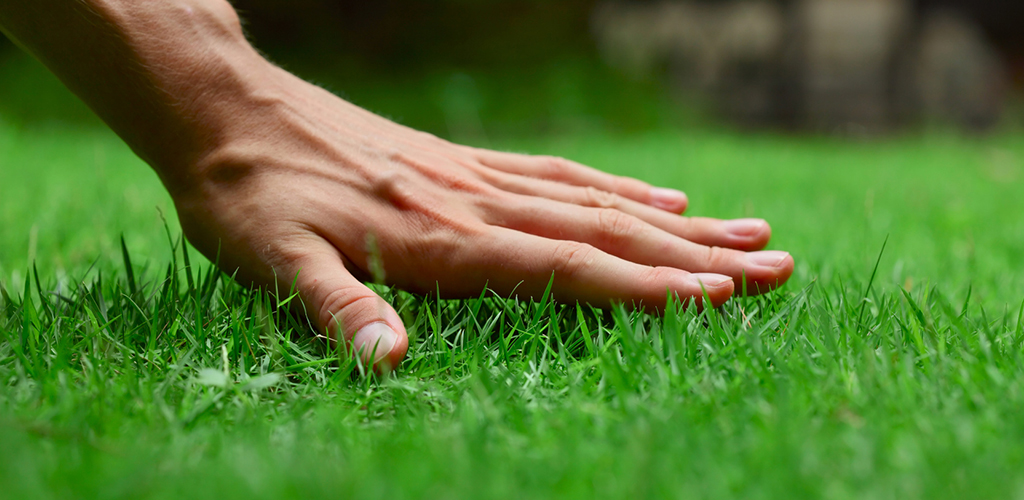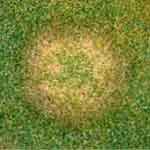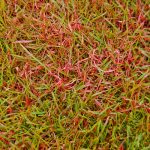Like other garden plants and trees, grass can be attacked by a number of different fungal diseases too. Fortunately, lawns normally recover from these attacks with the right treatment.
The best way to reduce the risk of lawn disease is to be pro-active and give your grass the treatment it needs to stay strong and healthy. Regular scarification and aeration along with a routine maintenance program will reduce the chances of your grass suffering from fungal attack, in particular, from Fusarium and Red Patch, two of the most common lawn diseases.
Fusarium Patch (or Snow Mould)
Fusarium patch, sometimes called snow mould as the disease can become noticeable after thaws of snow, is one of the most common lawn diseases. Caused by the fungus Microdochium nivale, it first appears as small patches of yellowish, dying grass that later turn brown. These patches can increase in size to reach 30cm (12in) or more in diameter, merging together to form a large area.
Fusarium patch usually appears in autumn or mild winters but can occur at other times of the year. It’s one of the most damaging grass diseases and is sometimes difficult to control as it can spread quickly to destroy a lawn.
Regular scarification and aeration will help you to reduce the risk of fusarium patch, and you should also avoid feeding your lawn with high doses of nitrogen in the autumn.
Red Thread
Red thread is another frequently seen lawn disease that results in patches of dead grass during wet summers and in autumn, although it can appear at other times of the year.
The fungus Laetisaria fuciformis causes patches of red-tinged grass, which turn brown and die back. This disease usually appears on lawns that are deficient in nitrogen.
A high dose of nitrogen used to cure most red-thread infestations, but some forms have become resistant to this. The only way to help keep it in check is regular scarification and aeration to improve air circulation.
Red thread rarely kills the grass completely, and if you take remedial action, your lawn should recover.
Practice Good Lawn Care
By looking after your lawn, you can keep grass diseases under control or prevent them from occurring in the first place.
First, you should make sure your lawn is kept at the right length all year round and don’t scalp it as this will weaken the grass. In spring and summer, keep your lawn well fed, but avoid high doses of nitrogen fertiliser in late summer or autumn.
In summer, you should ensure your lawn doesn’t dry out as this will make it more prone to disease. Water thoroughly and dispose of any grass cuttings to ensure they don’t re-infect the lawn.
Compacted areas and poor drainage will encourage disease and reduce the health of your grass, which is why we recommend regular scarification to remove organic matter that has formed a thatch layer as this weakens grass and encourages moss and weeds to grow.
Alongside this, regular aeration will release compacted soil and allow air, water and nutrients to penetrate down to the grass roots to promote a healthy lawn.
Seasonal Lawn Care Treatment Programs
Green Mile Lawn Care offers a range of lawn care treatment packages that are guaranteed to improve the condition of your lawn.
We’re currently offering 12.5% discount off both aeration and scarification services.
To find out more, contact Green Mile Lawn Care on 01252 313305 or contact us via our website for your free survey.





